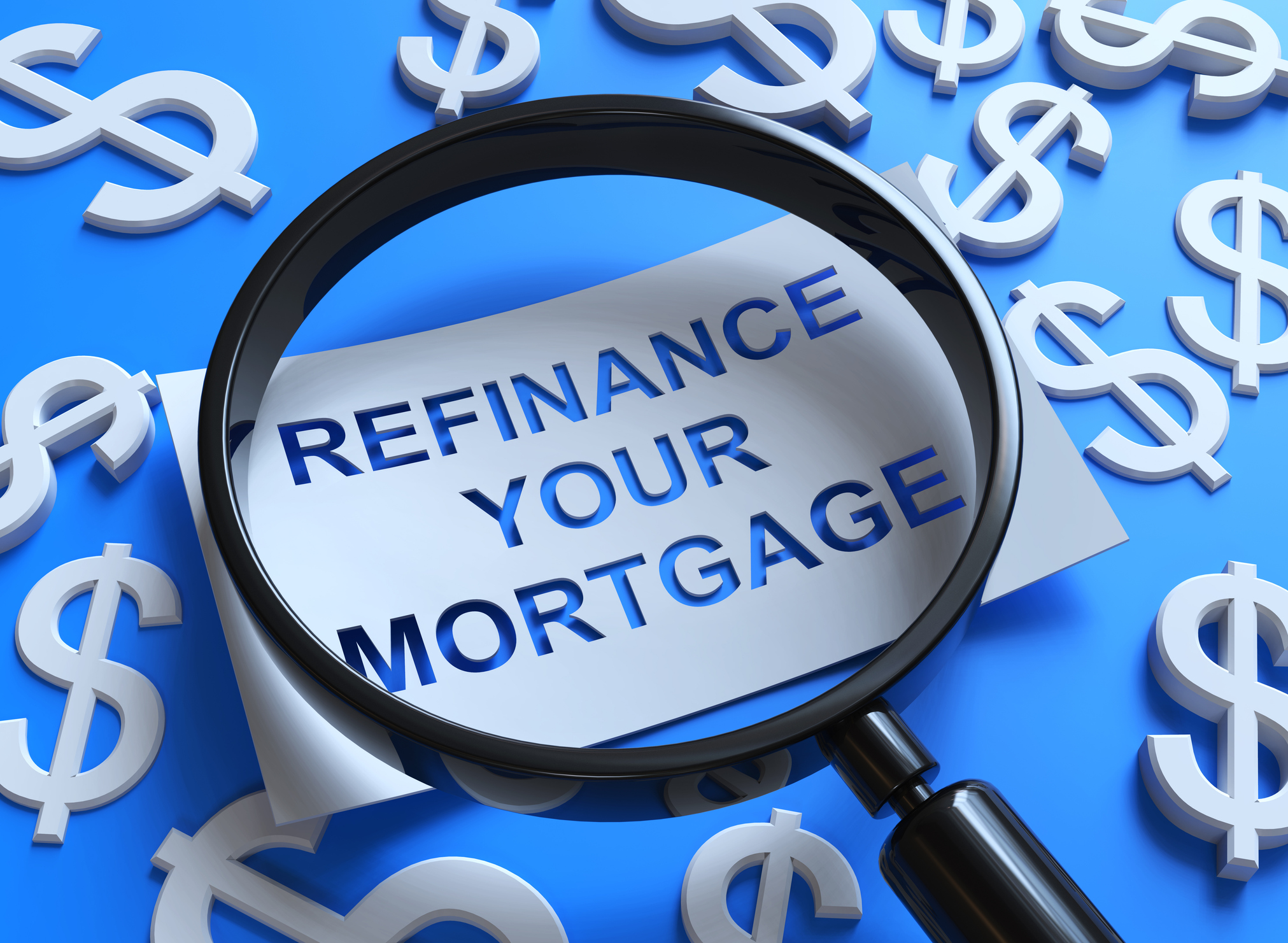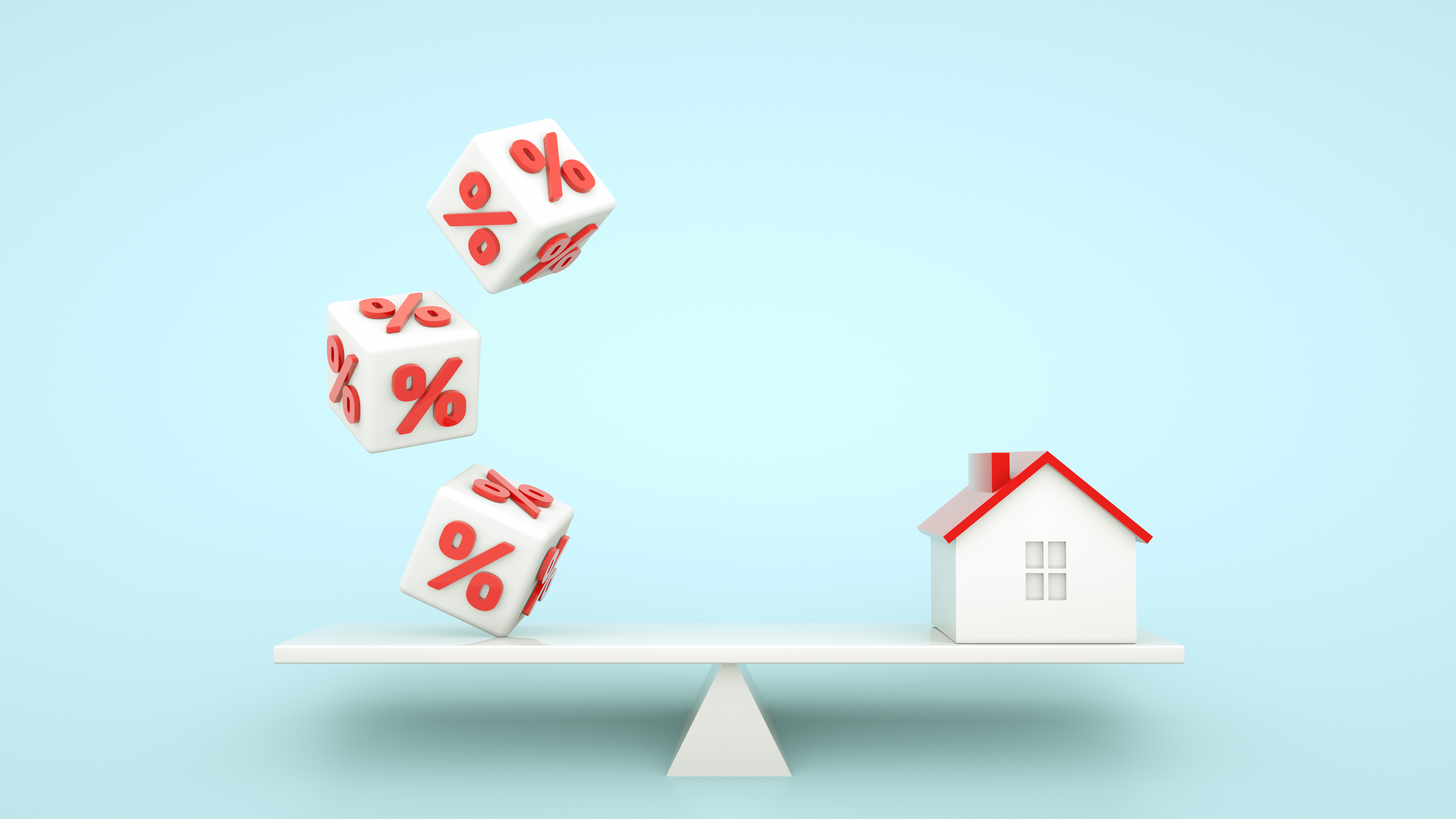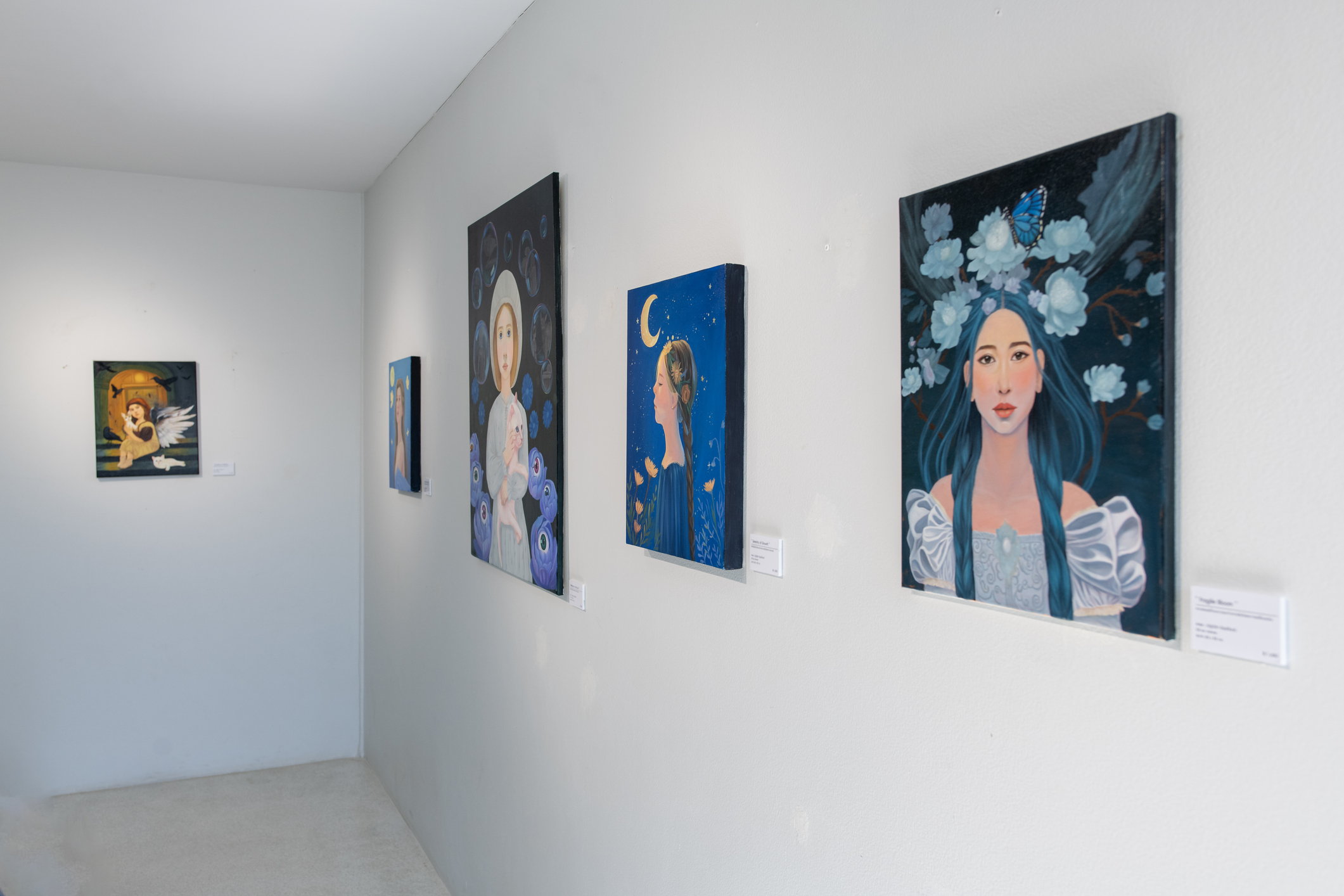Should You Refinance Your Mortgage Now That the Fed Just Cut Rates?
The Fed just cut rates, so mortgage refinance rates will be cheaper. Should you act now, or wait?


Deciding whether to refinance your mortgage can be a lot like playing golf. When the conditions are right and you’ve studied the course, you have a better chance at hitting a hole in one. With the Federal Reserve cutting rates for the third time at its December meeting, homeowners with higher-rate loans may finally have an opening to score some savings.
Refinancing can help you lower your monthly payment and reshape your loan to fit your current goals, whether that means switching from an adjustable-rate to a fixed-rate mortgage for more stability or shortening your term to pay off your home faster.
Before you rush to refinance, take a closer look at the full picture. Even if today’s lower rates make refinancing sound appealing, it isn’t free. Closing costs, fees and the time it takes to break even all play a role in determining whether a refinance saves you money. Understanding these expenses, and how they fit into your long-term plans, is key to deciding if refinancing is the right move for you.
From just $107.88 $24.99 for Kiplinger Personal Finance
Become a smarter, better informed investor. Subscribe from just $107.88 $24.99, plus get up to 4 Special Issues

Sign up for Kiplinger’s Free Newsletters
Profit and prosper with the best of expert advice on investing, taxes, retirement, personal finance and more - straight to your e-mail.
Profit and prosper with the best of expert advice - straight to your e-mail.
The cost of refinancing your mortgage
When you refinance your mortgage, you’re getting a brand-new mortgage with a lower interest rate, possibly a different loan term and potentially from a different lender. This new mortgage pays off your original loan.
Refinance closing costs are fees and expenses related to replacing your existing mortgage balance with a new one. They typically include many of the same fees you paid when you first closed on your home loan.
National average closing costs for a single-family home refinance were $6,800 without taxes or recording fees, according to ClosingCorp (now part of Core Logic.) The fees typically add up to between 2% and 5% of the loan amount.
Here are eight types of closing costs you can expect when you refinance your mortgage:
- Application fee: $75 – $300
- Origination and/or underwriting: 1% – 1.5% of loan principal
- Attorney/settlement fee: $400 – $1,000
- Recording fee: $25 – $250 depending on location
- Appraisal fee: $300 – $500 depending on location
- Credit check fee: $35 – $75
- Title services: $300 – $2,500
- Survey fee: $150 – $400
You might be able to reduce your refinance closing costs by increasing your credit score, reducing your overall debt load and shopping around for the best lender. If you work with the same title insurance company you can ask for a discounted reissue rate.
Use the tool below to compare some of today's top mortgage refinance offers, powered by Bankrate:

Impact of refinancing for a lower rate
Whether or not it makes sense to refinance your mortgage is primarily based on whether the upfront costs of refinancing and the time period you intend to occupy the home work together to lower your monthly costs and make refinancing cost-effective. It’s usually worth it to refinance if you could lower your current rate by one percent.
This is calculated by adding up all refinancing closing costs and figuring out how many years it will take you to make up those costs with the savings from your new mortgage payment compared to your previous one. Refinancing makes more sense if you plan to stay in your home longer than the break-even point. Otherwise, you could potentially lose money.
You can calculate your own potential savings by using Kiplinger's Mortgage Refinance Calculator and determine which rate will help you get to your break-even number.
Let's take a look at two examples of the impact of lower rates on monthly payments. Our scenarios include a loan balance of $400,000, a mortgage rate of 6.5% and refinancing costs of 2%.
As the table below demonstrates, a mortgage rate decrease of 1% versus 0.5% results in widely different break-even times, thanks to number crunching assistance from The Mortgage Report.
Refinancing for a 1% lower rate | Row 0 - Cell 1 | Row 0 - Cell 2 |
| Row 1 - Cell 0 | Loan balance | $400,000 |
| Row 2 - Cell 0 | Current interest rate | 6.5% |
| Row 3 - Cell 0 | New interest rate | 5.5% (-1%) |
| Row 4 - Cell 0 | Monthly savings | $257 |
| Row 5 - Cell 0 | Closing costs | $8,000 (2%) |
| Row 6 - Cell 0 | Duration of break even period | 31 months (2.6 years) |
| Row 7 - Cell 0 | Worth It? | If you keep the loan 2.6 years or longer |
Refinancing for a 0.5% lower rate | Row 8 - Cell 1 | Row 8 - Cell 2 |
| Row 9 - Cell 0 | Loan balance | $400,000 |
| Row 10 - Cell 0 | Current interest rate | 6.5% |
| Row 11 - Cell 0 | New interest rate | 6.25% (-0.5%) |
| Row 12 - Cell 0 | Monthly savings | $122 |
| Row 13 - Cell 0 | Closing costs | $8,000 (2%) |
| Row 14 - Cell 0 | Duration of break even period | 65 months (5.5 years) |
| Row 15 - Cell 0 | Worth It? | If you keep the loan 5.5 years or longer |
Refinancing for a 0.25% lower rate is not generally recommended but could be worth it if you can refinance to consolidate high-interest debts, have a jumbo loan with significantly higher interest rates or are switching from an adjustable-rate mortgage to a fixed-rate mortgage.
Refinancing options before the break-even point
Remember that “breaking even” with your closing costs isn’t the only way to determine if a refinance is worth it. A homeowner who plans to move or refinance again before the break-even point might opt for either a no-closing-cost refinance or rolling closing costs into the refinance loan.
No-closing-cost refinancing typically means the mortgage lender covers part or all of your closing costs, and you pay a slightly higher interest rate in exchange. If you’re still saving enough when compared to your existing mortgage loan, this strategy can still pay off. This can be a beneficial situation for borrowers who plan to keep their new loan for only a few years.
You can also roll the closing costs into the refinance loan. If you're cash poor and going to keep the loan for more than a few years, rolling closing costs into the loan amount may be more affordable than a no-closing-cost loan with a higher interest rate.
Making the decision to refinance
When deciding to refinance, look closely at all of the numbers and how they impact your monthly costs. You also need to consider costs over the life of the loan or the time period you intend to live in the home if you plan on selling in the near term. Because if your new interest rate isn’t low enough, you might actually pay more interest in the long run because you pay it for a longer time.
Evaluating the impact of your credit score on how much your new loan will cost can also help you determine the right time to refinance. When you can’t qualify for an interest rate that’s lower than your current loan’s rate, consider improving your credit score before applying.
Relayed Content
Profit and prosper with the best of Kiplinger's advice on investing, taxes, retirement, personal finance and much more. Delivered daily. Enter your email in the box and click Sign Me Up.

Donna joined Kiplinger as a personal finance writer in 2023. She spent more than a decade as the contributing editor of J.K.Lasser's Your Income Tax Guide and edited state specific legal treatises at ALM Media. She has shared her expertise as a guest on Bloomberg, CNN, Fox, NPR, CNBC and many other media outlets around the nation. She is a graduate of Brooklyn Law School and the University at Buffalo.
-
 The Santa Claus Rally Officially Begins: Stock Market Today
The Santa Claus Rally Officially Begins: Stock Market TodayThe Santa Claus Rally is officially on as of Wednesday's closing bell, and initial returns are positive.
-
 How to Leave Different Amounts to Adult Children Without Causing a Rift
How to Leave Different Amounts to Adult Children Without Causing a RiftHere’s how to leave different amounts to adult children without causing a family rift.
-
 My Retirement Learning Curve, 1 Year In
My Retirement Learning Curve, 1 Year InA retiree checks in with what they wish they knew early on and what they've changed about their plan one year in.
-
 How to Leave Different Amounts to Adult Children Without Causing a Rift
How to Leave Different Amounts to Adult Children Without Causing a RiftHere’s how to leave different amounts to adult children without causing a family rift.
-
 Introducing Your CD's Edgier Cousin: The Market-Linked CD
Introducing Your CD's Edgier Cousin: The Market-Linked CDTraditional CDs are a safe option for savers, but they don't always beat inflation. Should you try their counterparts, market-linked CDs, for better returns?
-
 How to Protect Yourself and Others From a Troubled Adult Child: A Lesson from Real Life
How to Protect Yourself and Others From a Troubled Adult Child: A Lesson from Real LifeThis case of a violent adult son whose parents are in denial is an example of the extreme risks some parents face if they neglect essential safety precautions.
-
 Here's How Much You Can Earn with a $100,000 Jumbo CD
Here's How Much You Can Earn with a $100,000 Jumbo CDYou might be surprised at how fast a jumbo CD helps you reach your goals.
-
 A Financial Planner Takes a Deep Dive Into How Charitable Trusts Benefit You and Your Favorite Charities
A Financial Planner Takes a Deep Dive Into How Charitable Trusts Benefit You and Your Favorite CharitiesThese dual-purpose tools let affluent families combine philanthropic goals with advanced tax planning to generate income, reduce estate taxes and preserve wealth.
-
 How Financial Advisers Can Best Help Widowed and Divorced Women
How Financial Advisers Can Best Help Widowed and Divorced WomenApproaching conversations with empathy and compassion is key to helping them find clarity and confidence and take control of their financial futures.
-
 Your Guide to Buying Art Online
Your Guide to Buying Art OnlineFrom virtual galleries to social media platforms, the internet offers plenty of places to shop for paintings, sculptures and other artwork without breaking the bank.
-
 I'm 59 With $1.7 Million Saved and Just Lost My Job. Should I Retire at 59½, or Find New Work?
I'm 59 With $1.7 Million Saved and Just Lost My Job. Should I Retire at 59½, or Find New Work?We asked professional wealth planners for advice.